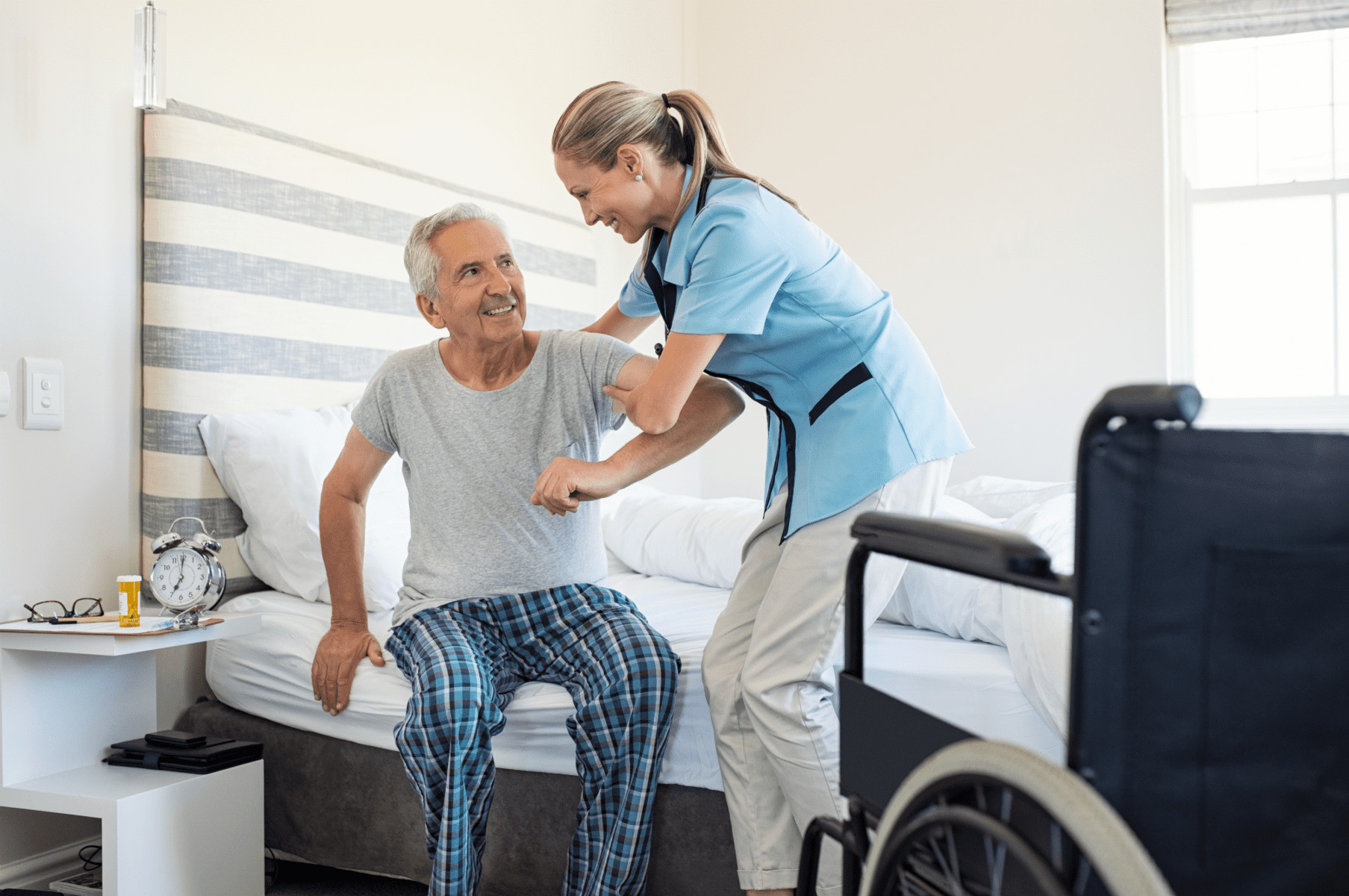Parkinson’s is a terrible disease in which a patient is a balance, mobility of arm or hand, and developing a tremor. Parkinson’s is not a fatal disease, but it does make doing everyday things a little more challenging for some people. It is a neurodegenerative disorder that progresses slowly, and the causes remain unknown. When hiring a home healthcare provider, you want to be sure that the person plays a significant helping role in your loved ones’ life as they adjust to the new stages of their disease.
Homecare for Patients who are living with Parkinson’s
Because it is a disease that progresses over time, it can be challenging for the family and the caregiver. The caregiver’s role is to help the patient cope with the news of the disease. They are to do day to day tasks with them, helping them move their limbs affected by the illness, but as the ailment progresses, it does become more problematic for that caregiver.
Beginning of Parkinson’s: Signs and How the Caregiver will Treat it
In the early stages of this disease, there are minor inconveniences that the caregiver and the loved one will face. They will be teaching that patient on what medications to take and how to manage them. Caregivers will suggest support from other loved ones to help the patient feel more at ease with this new diagnosis.
The patient will be facing to handle tremors of the fingers or sometimes the entire hand or foot. A loved one could also experience tremors in the face or jaw, but those are very rare. Other symptoms of Parkinson’s your loved one may have to tolerate in the early stages is muscle rigidity. With healthy individuals, a muscle will contract with movement and then rest and relax.
With a patient who has Parkinson’s, that is not the case. The loved one will feel the muscles contract with movement, but they will not rest. This will lead to a limited range of motion, which can be uncomfortable and painful. This is most felt in limbs, shoulders, and neck. Your loved one will also start to move slower than they ever were. This is a distinctive symptom of Parkinson’s. This makes ordinary activities like walking, moving or changing clothes very difficult.
For a caregiver, this is nothing out of the ordinary. Limited movement, tremors are all things they have experienced before with other patients, even passed patients who have had Parkinson’s. Day by day, they will create a daily schedule and keep the loved one moving to help the disease’s progression become far off.
Mid-Stages of Parkinson’s: Signs and How the Caregiver will Treat it
In the mid-stages of Parkinson’s, a home care provider’s responsibilities and burdens increase tremendously. Daytime sleepiness and fatigue will interrupt daily plans, and frustrations grow around communication. In the late stages of the disease, the responsibility and challenges are very significant.
In the middle stages of PD, the patient will have to tolerate the loss of balance and slowness of movement. Falling is very common in this stage, in addition to resting tremors and stiffness. Also, the loved one will suffer from being fatigued as well as having sleeping problems. PD can affect the person’s speech during this stage too. This becomes difficult for the caregiver to know what the loved one wants.
As the disease progresses, it becomes difficult to move the loved one and talk to them. Becoming tired and sleepy could derail daily plans and tasks. A caregiver can try speech therapy and vocal exercises to improve the talking and keep it around for a little longer.
Making it easier for a caregiver to take care of your loved one during this stage can be the following:
- Electric toothbrushes and shavers
- Purchasing adaptive equipment like cups with lids and large handles.
- Shoes with velcro.
- Installing handrails in the bathrooms.
- Moving furniture as needed to create clear paths.
- Removing throw rugs and leveling thresholds.
These will help move the patient with helpful devices, more manageable daily hygiene tasks, and more comfortable feeding and hydration.
The Late-Stages of Parkinson’s: Signs and How the Caregiver will Treat it
The late stages of PD are probably the most difficult for caregivers. Mobility is at its most demanding, and caregivers must provide hands-on assistance. There could be episodes of sudden stiffness and inability to move. There will be moments of forgetfulness and confusion.
As caregivers, they are to give the best quality of life to the best of their abilities. As movement becomes an issue, there are more hands-on required, especially during moments of freezing episodes. A caregiver needs to remember every doctor’s appointment and other things a loved one could forget.
As the loved ones’ family members, it is best to be present as much as possible. This will support the caregiver when moving, feeding, and when the patient is suffering from memory loss. It must be a team effort at this point.
Conclusion
When your loved one is being cared for Parkinson’s, it is best to have a well-trained, knowledgeable, and adaptable caregiver. TLC Home Care can provide well- trained individuals who have worked with other patients who have had Parkinson’s before.
